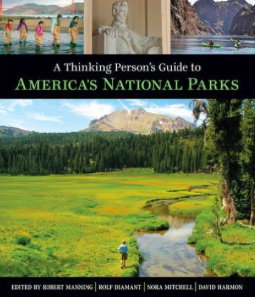
Last summer, I taught a college course on the History of U.S. National Parks. At the time, I lamented the relative lack of high-quality, scholarly research on recent National Park history to share with my students. Fortunately for me, when I teach the class again this spring, I will now have the book I was looking for – the recently published A Thinking Person’s Guide to America’s National Parks.
Unlike many synthetic or edited volumes on National Park history, A Thinking Person’s Guide to America’s National Parks not only addresses both natural and cultural resources, but also effectively makes the case that all sites in the system are, in fact, a combination of both – that humans have shaped the landscape (including in lands now labeled as protected areas!) for millennia and continue to do so in a variety of ways.
In addition, urban parks receive much needed attention, including in an article co-authored by one of the volume’s editors, Rolf Diamant, and Michael Creasy, a park superintendent with experience in urban parks. Too often park units located in and near cities get scant attention from the public and scholars, save for a few locations such as Independence National Historical Park in Philadelphia or the Jeffferson National Expansion Memorial in St. Louis. Diamant and Creasy challenge this exclusion, noting that one-third of parks are in urban areas and it is often these places that most effectively communicate the diversity of U.S. history and the complexity of the nation’s relationship to the natural world. In addition, their article contextualizes NPS involvement in cities, with a mention of the 1960’s Outdoor Recreation Resources Review Commission or ORRRC.
Other authors address such pressing issues as civic engagement, partnership parks and Indigenous voices, to name only a few topics. For those interested in learning more about the history of National Parks and the National Park Service as well as current and future policy concerns, this book is a must read – especially given the context of the NPS centennial and the upcoming federal elections.
A Thinking Person’s Guide to America’s National Parks. Edited by Robert Manning, Rolf Diamant, Nora Mitchell and David Harmon (George Braziller Publishers: New York, 2016)


